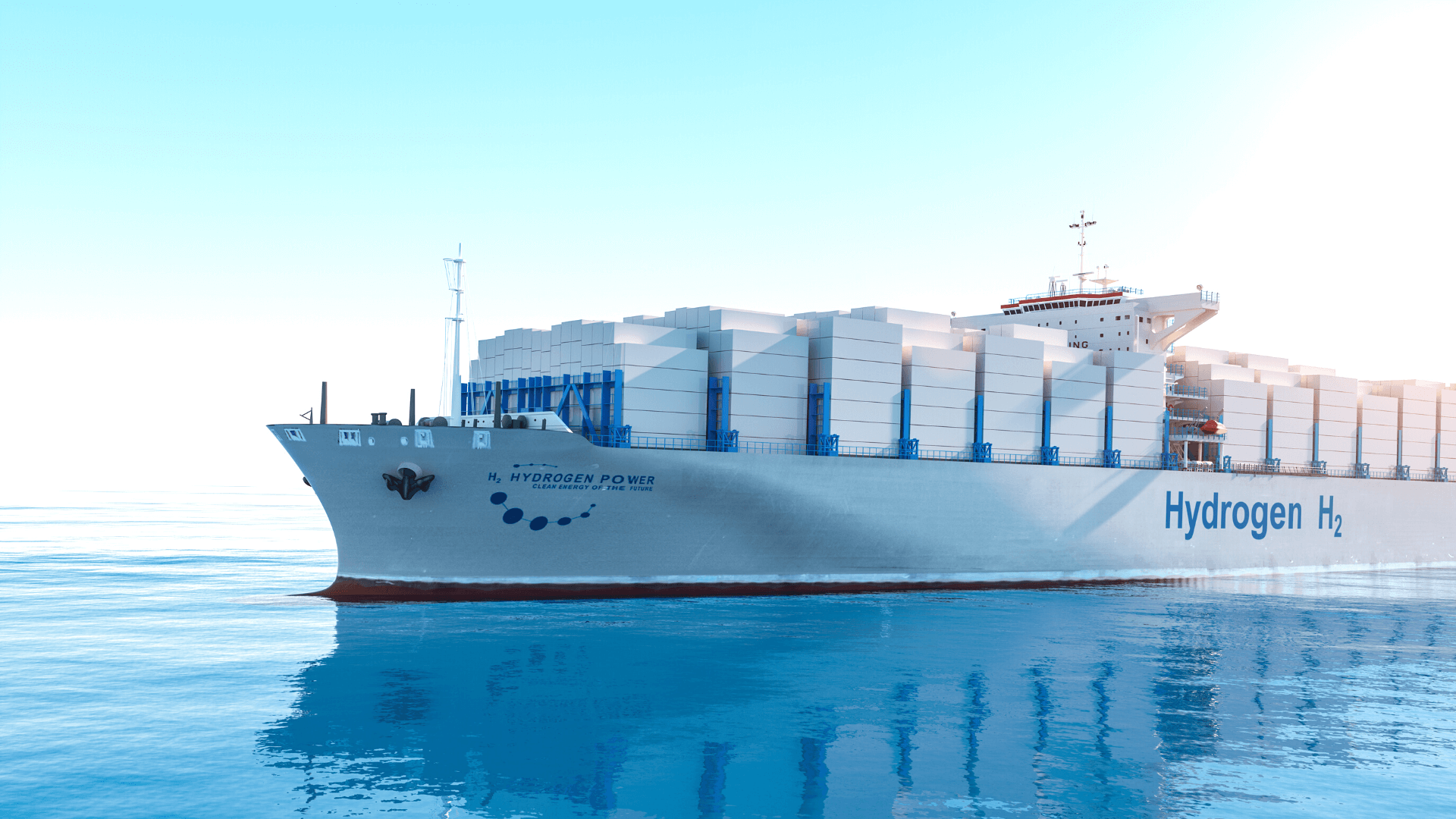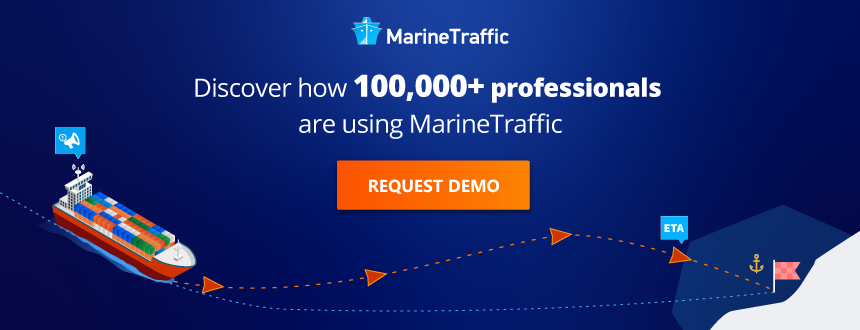Green hydrogen is central to a recently announced Trans-Atlantic green corridor Photo: Shutterstock
Two ports over 5000 km apart and separated by Atlantic Ocean and North Sea, are partnering to encourage green shipping.
On 29 September the inland port of Hamburg on Germany’s northwest coast and Canada’s port of Halifax on the east coast, agreed to help reduce carbon emissions from shipping in the North Atlantic by creating port infrastructure for green hydrogen bunkering.
Few vessels actually sail directly between the two ports. MarineTraffic port call data shows that since the beginning of this year until 9 October, only four vessels have arrived at Halifax direct from Hamburg, with a few more travelling from east to west – 16 vessels sailed direct from Hamburg to Halifax.
The Atlantic is the busiest ocean in the world, however, with hundreds of vessel movements a day. The future green corridor will likely become a catalyst for the adoption of green hydrogen as a fuel for many of the vessels moving between Europe and North America, not just the two ports.
It is the second green corridor across the Atlantic, following an announcement by the port of Antwerp in Belgium and Montreal, another Canadian port, in November last year.
Halifax Port Authority said in a press release that under the MoU the two ports will foster collaboration between other players in the value chain, including shipping lines and will lobby for regulation, financial incentives and regulatory frameworks to support decarbonisation.
Related: Supporting IMO E-learning: ‘An Introduction to Energy Efficient Ship Operation’
Further, it may result in increased direct business opportunities between the two countries. Halifax port said it hopes the MoU will “enable Canadian companies to deploy their technologies more easily in the German market [and] provide German companies with opportunities to invest in growing manufacturing capabilities in Canada.”
“We have a long relationship of cooperation and share a mutual drive and commitment toward sustainability and digitalization,” said Captain Allan Gray, President and CEO of the Halifax Port Authority. “It seems only natural that we continue to collaborate to decarbonise a significant trade route between our two ports.”
The Halifax-Hamburg green corridor MoU is one of a number of corridor announcements since the UK launched the Clydebank Declaration, that calls for the creation of zero-emission corridors, at a United Nations climate summit, COP26, in Glasgow last year. There are currently 24 signatories to the convention including Germany and Canada.
Related: Reducing costs & emissions with Maritime Analytics [webinar]
Green corridors are zero-emission maritime routes between two or more ports.
The concept was borne out of recognition that the complexity and scale of reaching zero emissions at a global level is enormous. By encouraging route-specific cooperation amongst fuel infrastructure and vessels, regions and countries, the challenges become more manageable.
“By 2025, the aim is to have set up at least six such corridors, which would each run between two or more ports. By 2030, it is hoped many more routes will be operational,” says the Clydebank Declaration.
Antwerp and Montreal was first off the mark when it announced at the event to pledge to a green shipping corridor to “facilitate the trade of green fuels and the supply of renewable fuels and clean technologies to vessels”.
To realise its aims it will look to green hydrogen, green ethanol and green methanol, as well as biofuels such as biodiesel and renewable natural gas, alongwith hydropower from a Quebec-based power supplier.
Related: Containerships can cut emissions by 14 per cent through Just In Time arrivals
Other green corridor announcements include a partnership between the European ports of Gdynia, Poland; Hamburg, Germany; Roenne, Denmark; Rotterdam, the Netherlands; and Tallinn, Estonia, along with Mærsk Mc-Kinney Møller Centre for Zero Carbon Shipping to create a new European Green Corridors Network, reported Ship Technology.
Meanwhile, zero-emission options for the English Channel – or La Manche – which separates UK’s southeast coast and France’s west coast are also underway.
According to Port Technology, the UK’s Port of Dover has won a bid to “fund the Green Corridor Short Straits (GCSS) consortium’s feasibility study to establish a zero-carbon trade route, the first of its kind in the UK. The partnership also includes the ports of Calais and Dunkirk.”
Related: Spotlight on the Ship-Port-Interface Guide
Meanwhile, in August the ports of Singapore and Rotterdam signed an MoU to “establish the world’s longest Green and Digital Corridor to enable low and zero carbon shipping”. Under this agreement a variety of fuels are being considered, including hydrogen.
According to Lloyd’s List Singapore is considering a similar corridor with Japan.
Spanish oil and gas company Cepsa and the Dutch port of Rotterdam have also entered into an agreement to develop a shipping corridor for green hydrogen linking southern Spain to the northern European hub in the Netherlands,” reported Upstream.
All of these projects are heavily focussed on partnerships between the many players involved, including energy suppliers, ports, local governments, and of course shipping lines.
The Halifax/Hamburg and Cepsa/Rotterdam projects’ firm commitment to green hydrogen is a major plus for energy partners of the low emissions fuel and sends a serious sign to shipping companies, who are likely trying to get a clear grasp of how to reach their emissions targets, that green hydrogen will play a significant role in the future bunkers landscape.
From an environmental perspective, green hydrogen is the ideal option. Made by splitting water into its two components, hydrogen and oxygen, using renewable electricity, its only byproduct is water. However, according to a report by the Getting to Zero Coalition – The Next Wave: Green Corridors – the liquefaction process and cryogenic storage requirements to enable it to be carried onboard as a fuel, increases costs and makes it an expensive option.
It’s a perception that the industry agrees with, as reported by Recharge News: “The consensus view is that governments will need to subsidise green hydrogen in the short to medium term to make it affordable and create a viable and sustainable market for the gas — in a similar way to how feed-in tariffs and national tenders have drastically cut the cost of wind and solar power over the past 20 years.”
The Getting to Zero Coalition is confident in the gas as a marine fuel, however, as it believes it “has scalability advantages as the use of green hydrogen is a route for decarbonisation in other sectors”. If production is scaled up, eventually prices should come down.
Halifax, Hamburg and Rotterdam putting their weight behind the gas is a clear sign that the technology and infrastructure necessary to bunker ships will be coming soon to a port near you.

